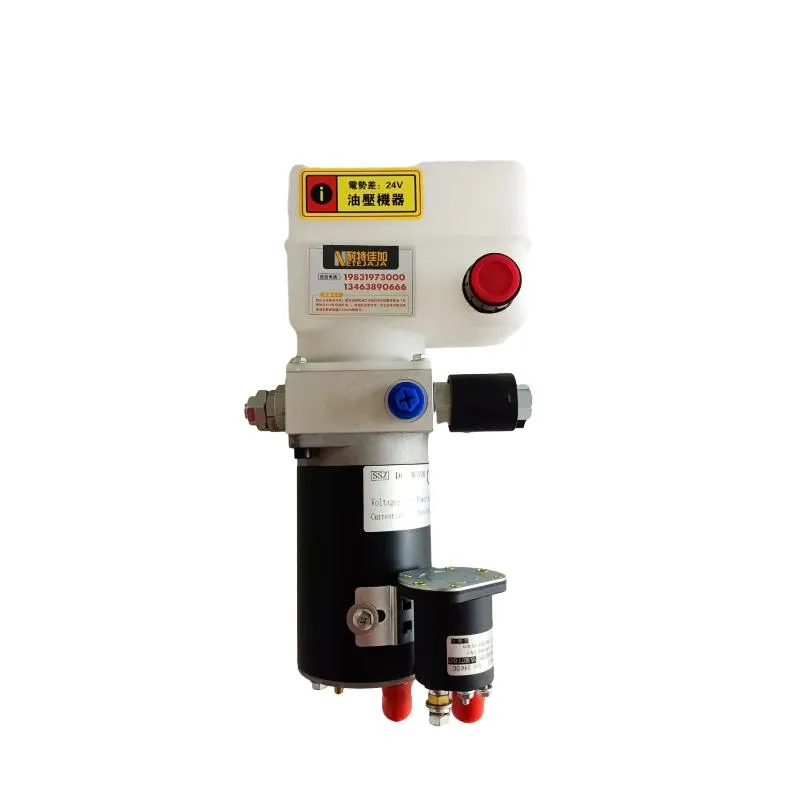Dis . 12, 2024 19:27 Back to list
Three-Stage Telescopic Hydraulic Cylinders Manufacturers for Heavy Equipment Applications
Understanding the 3-Stage Telescopic Hydraulic Cylinder Manufacturing Process and Applications
Hydraulic cylinders are vital components found in various applications ranging from construction machinery to agricultural equipment. Among the various designs of hydraulic cylinders, the 3-stage telescopic hydraulic cylinder stands out for its ability to provide significant output force and improve the compactness of machinery. In this article, we will explore the intricacies of 3-stage telescopic hydraulic cylinders, their manufacturing process in factories, and their diverse applications.
What is a 3-Stage Telescopic Hydraulic Cylinder?
A 3-stage telescopic hydraulic cylinder consists of three nested cylinders (or stages) that extend and retract in a telescopic manner. This design allows for a larger extension length in a compact form factor, making it ideal for applications where space is limited. The operation of the cylinder is governed by hydraulic fluid, which is pumped into the cylinder to produce force. The three stages allow for varying lengths and force applications, enabling it to handle heavy loads efficiently.
Manufacturing Process of 3-Stage Telescopic Hydraulic Cylinders
The production of 3-stage telescopic hydraulic cylinders involves several key steps
1. Material Selection The first step in manufacturing is choosing the right materials. Commonly used materials include high-strength steel and aluminum alloys, which provide the necessary durability and resistance to wear. The alloy chosen will often depend on the specific application and operational demands.
2. Machining After material selection, the components are machined to precise specifications. This involves turning, milling, and drilling to create the inner and outer diameters of each stage. Precision is crucial during this process to ensure that the components fit together seamlessly and function correctly.
3. Welding and Assembly Once the individual parts are machined, the next step is welding. The stages must be assembled using high-quality welding techniques to ensure structural integrity and durability. Each stage has to be aligned accurately to prevent issues during operation, such as binding or excessive wear.
4. Surface Treatment To enhance resistance to corrosion and wear, surface treatments such as anodizing, sandblasting, or painting are applied. This not only improves the lifespan of the cylinder but also contributes to an aesthetically pleasing finish.
3 stage telescopic hydraulic cylinder factories

5. Testing After assembly, each hydraulic cylinder undergoes rigorous testing to ensure functionality and safety. This may include pressure testing and operational testing to verify that the cylinder performs under its designed load.
6. Quality Control Manufacturing facilities often employ stringent quality control measures to monitor every stage of production. This involves inspections and performance assessments to adhere to industry standards and regulations.
Applications of 3-Stage Telescopic Hydraulic Cylinders
The versatile nature of 3-stage telescopic hydraulic cylinders enables their use across various industries
- Construction Equipment They are commonly found in dump trucks, backhoes, and excavators, where they are used to lift or extend components, such as dump bodies and arms, over substantial heights.
- Agricultural Applications In agricultural equipment like loaders and compactors, these hydraulic cylinders provide the necessary power to lift heavy loads, from bales of hay to large implements.
- Industrial Machinery Many industrial machines utilize 3-stage telescopic cylinders to move parts and machinery or to automate processes where space is a constraint.
- Automotive Sector These cylinders are also employed in certain automotive applications, including hoisting systems and lifting platforms.
Conclusion
The 3-stage telescopic hydraulic cylinder is a remarkable engineering solution that combines functionality with space efficiency. The detailed manufacturing processes involved ensure that these cylinders are robust, reliable, and suited for a variety of demanding applications. As technology evolves, we can expect further innovations in hydraulic cylinder designs and materials, continuing to enhance their performance and applications across different industries. Whether in construction, agriculture, or manufacturing, the impact of 3-stage telescopic hydraulic cylinders will remain significant, driving progress and efficiency in numerous fields.
-
High-Quality Set of 50/60-45-290 471 - Precision Parts
NewsAug.19,2025
-
1.5 Ton Lifting Cylinder-Hebei Shenghan|Heavy-Duty Lifting, Precision Engineering
NewsAug.18,2025
-
1.5 Ton Lifting Cylinder-Hebei Shenghan|Precision Hydraulic Solutions&Industrial Lifting
NewsAug.18,2025
-
1.5 Ton Lifting Cylinder 70/82-40-290-535 - Hebei Shenghan Hydraulic Machinery Co., Ltd.
NewsAug.18,2025
-
1.5 Ton Lifting Cylinder 70/82-40-290-535|Hebei Shenghan Hydraulic Machinery Co., Ltd.
NewsAug.18,2025
-
1.5 Ton Flipping Oil Cylinder 70/82-40-217-720: High Performance
NewsAug.18,2025
